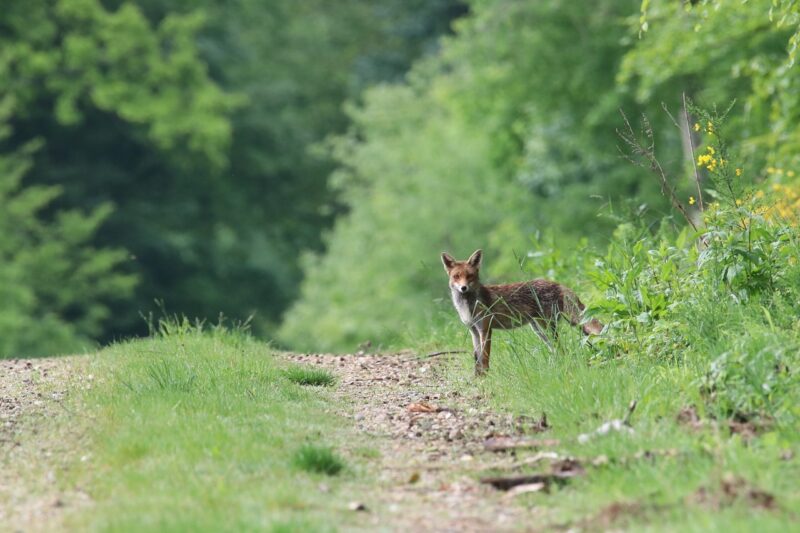The Evolution of Ecosystems and the Complex Interactions Between Species
November 12, 2024

Ecosystems are intricate networks of interactions among living organisms and their environment, shaped over millions of years. The evolution of these ecosystems has led to a diverse array of species, each uniquely adapted to their respective habitats. Understanding the evolution of ecosystems and the complex interactions between species provides insight into the delicate balance of nature and the significance of biodiversity.
1. The Concept of Ecosystems: A Brief Overview
An ecosystem encompasses all living organisms in a given area, their physical environment, and the interactions between them. This includes:
- Biotic Components: All living entities, including plants, animals, fungi, and microorganisms.
- Abiotic Components: Non-living elements like air, water, soil, and climate that affect living organisms.
Ecosystems can vary significantly in size and complexity, from a tiny pond to vast rainforests or deserts. The interactions within ecosystems can be categorized into several types, including predation, competition, symbiosis, and mutualism, each playing a crucial role in the overall functionality of the ecosystem.
2. The Evolutionary Journey of Ecosystems
Ecosystems have undergone significant change since life first emerged on Earth. Understanding this evolutionary journey can provide insights into current ecological dynamics. Key milestones include:
The Formation of Early Ecosystems
The earliest ecosystems formed in the oceans approximately 3.5 billion years ago. These primitive systems were primarily composed of microbial life, including bacteria and archaea. Through processes like photosynthesis, these organisms started to produce oxygen, setting the stage for more complex life forms.
Colonization of Land
Around 450 million years ago, life began to transition from the oceans to land, leading to the formation of terrestrial ecosystems. Plants were the first organisms to colonize the land, followed by insects, amphibians, and eventually reptiles and mammals. This shift created new interactions and relationships among species, influencing their evolution and adaptations.
The Role of Climate Change in Ecosystem Evolution
Throughout Earth’s history, climate change has played a significant role in shaping ecosystems. Glacial periods, volcanic eruptions, and asteroid impacts have triggered mass extinctions and subsequently spurred evolutionary adaptations in surviving species. For example, the extinction of the dinosaurs 66 million years ago led to the rise of mammals and the evolution of diverse habitats.
3. Complex Interactions Between Species
Within ecosystems, species interact through various relationships that can evolve over time. Key types of interactions include:
Predation and Herbivory
Predators and prey engage in an ongoing evolutionary arms race, resulting in adaptations on both sides. Predators may evolve sharper teeth or faster speeds, while prey may develop better camouflage or heightened senses to evade capture.
Competition
Species often compete for the same resources, such as food, nutrients, or habitat. This competition can drive evolutionary changes, enabling species to occupy different ecological niches or develop specific adaptations to survive in the presence of competitors.
Mutualism and Commensalism
Some species evolve to form mutually beneficial relationships, known as mutualism, where both parties gain advantages. For example, bees and flowering plants have co-evolved, with plants providing nectar for bees and bees facilitating pollination. In contrast, commensalism involves one species benefiting while the other remains unaffected, such as barnacles adhering to whales.
4. Case Studies of Ecosystem Evolution
To grasp the complexity of ecosystem evolution, analyzing specific case studies helps illustrate the intricate web of interactions:
Tropical Rainforests
Tropical rainforests are among the most diverse ecosystems on the planet, hosting an estimated 50% of the world’s plant and animal species. The relationships between trees, understory plants, and animals are an example of complex interactions that foster biodiversity. For instance, trees provide food and shelter for various species, while animals assist in seed dispersal, promoting forest regeneration.
Coral Reefs
Coral reefs are another example of complex ecosystems where species interactions are essential for survival. The symbiotic relationship between coral and zooxanthellae algae illustrates this. The algae provide energy to corals through photosynthesis, while corals offer protection and nutrients to the algae. This interdependence sustains the vitality of reef ecosystems but is threatened by climate change and pollution.
5. The Impact of Human Activity on Ecosystem Evolution
Human activities have significantly affected the evolution of ecosystems over the last century. Habitat destruction, pollution, climate change, and species introduction are some primary factors leading to shifts in ecosystem dynamics. These impacts can disrupt existing relationships between species, leading to:
- Loss of Biodiversity: As species decline due to habitat loss, the balance of ecosystems is disrupted, leading to more extinctions and further degradation of habitat.
- Altered Species Interactions: Changes in species populations can impact food webs and alter predation and competition dynamics, affecting ecosystem stability.
- Introduction of Invasive Species: Non-native species can outcompete, prey on, or introduce diseases to native species, leading to significant ecological shifts.
Conclusion: Preserving Ecosystems for Future Generations
The evolution of ecosystems and the complex interactions between species highlight the importance of understanding and preserving biodiversity. As human activities increasingly threaten these intricate networks, it becomes imperative to adopt sustainable practices to mitigate environmental impacts. Protecting ecosystems ensures the survival of countless species and fosters a healthy planet for future generations. By engaging in conservation efforts and becoming stewards of the environment, we can contribute to the ongoing evolution of ecosystems, maintaining the delicate balance of nature.
Through continued research, education, and action, we can further appreciate the dynamic nature of ecosystems and the critical role that every species plays in the grand tapestry of life on Earth.







